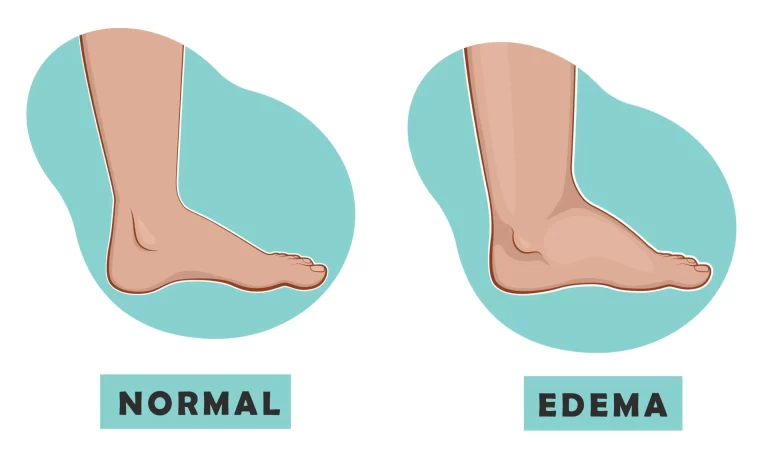Vitamin B5 Deficiency
Vitamin B5 Deficiency occurs when the body lacks an adequate amount of pantothenic acid, commonly known as Vitamin B5. This water-soluble vitamin plays a crucial role in various metabolic processes, particularly in the synthesis of coenzyme A (CoA), which is essential for the metabolism of carbohydrates, fats, and proteins.
Despite being relatively uncommon in the general population, a deficiency in Vitamin B5 can lead to a spectrum of symptoms affecting different bodily functions
Introduction
A drug called vitamin B5 is used to treat and control dietary deficiencies. It is a member of the class of medications known as dietary supplements. This exercise goes over the uses, side effects, and precautions of vitamin B5, which is a useful treatment for nutritional deficiencies.
The mechanism of action, adverse event profile, and other important aspects of treating patients with nutritional deficiencies and associated disorders will be highlighted in this activity.
Pantethine, a pantothenic acid derivative, is being researched to determine if it might assist reduce the body’s cholesterol levels.
Although it is uncommon, vitamin B5 deficiency can cause symptoms including upper respiratory infections, burning feet, nausea, vomiting, sleeplessness, melancholy, and irritability.
Objectives
- What are the recommended uses of vitamin B5?
- Examine the vitamin B5’s mode of action.
- Describe the medication administration procedures.
- Determine the dangers of taking too much vitamin B5.
Indications
The U.S. Food and Drug Administration (FDA) does not conduct an initial examination of vitamin B5 (pantothenic acid) supplements. The FDA is not authorized to test nutritional supplement items for efficacy and safety before they are marketed.
Of all the medications included in this section on indications, the FDA has only allowed the use of panthenol and dexpanthenol in cosmetic products.
The FDA has not authorized any of the remaining indicated uses. Natural sources of vitamin B5 include a wide range of plants and animals, including whole grains, eggs, milk, vegetables, meat, and poultry. Foods also artificially include it.
Because vitamin B5 is found in a wide variety of foods, deficiencies are often uncommon. Nonetheless, it can manifest in severely malnourished individuals.
It might be difficult to pinpoint the consequences that are unique to a vitamin B5 deficit because people with this condition frequently have shortages in other nutrients.
Research on an experimental vitamin B5 shortage linked the shortfall to symptoms including exhaustion, headache, malaise, altered personality, numbness, paresthesia, cramping in the muscles and abdomen, nausea, and poor muscular coordination.
Pantothenic acid insufficiency is more likely to occur in people who have a mutation in their pantothenate kinase 2 (PANK2) gene.
Sufficient mutations in PANK2 inhibit pantothenate kinase 2, which may lower pantothenic acid’s ability to be converted to coenzyme A (CoA) and therefore lower CoA levels.
Pantothenate kinase-associated neurodegeneration (PKAN) is also brought on by mutations in the PANK2 gene. An iron buildup in the brain that resembles the “eye of the tiger” sign is a typical characteristic of people with PKAN.
Along with a developing mobility problem, the other symptoms of the disease might differ greatly from case to instance. Dysarthria, dystonia, impaired balance, spasticity, and stiffness of the muscles are among the symptoms.
The primary goal of treatment for this illness is to lessen symptoms. Although there are a few anecdotal studies suggesting that vitamin B5 supplementation helps lessen symptoms, it is unknown what the long-term advantages of using this supplement generally in PKAN are.
Vitamin B5 is used extensively in the dermatological sector. The many consequences of nonsteroidal anti-inflammatory medications (NSAIDs) are attracting more and more attention.
This curiosity prompted research comparing the efficacy of hydrocortisone as the conventional therapy for atopic dermatitis with dexpanthenol, an alcoholic analog of D-pantothenic acid.
Overall, the study discovered that mild to moderate pediatric atopic dermatitis may be treated with dexpanthenol. According to additional studies, dexpanthenol cream may help control the mucocutaneous adverse effects of isotretinoin medication.
Dryness of mucous membranes, cheilitis, and xerosis are among the mucocutaneous adverse effects of isotretinoin medication, which is used to treat acne. Extensive research has demonstrated the effectiveness of dexpanthenol in wound healing applications.
In these brief clinical studies, the medication was used as a spray or pastille to treat wounds from tonsillectomy, endoscopic sinus surgery, and postoperative endotracheal intubation. These clinical trials demonstrate improved clinical results when dexpanthenol is used.
Still, further research is required to generalize medication effectiveness. Another area where vitamin B5 may be useful is dyslipidemia.
Vitamin B5 is involved in the metabolism of lipids because it is necessary for the production of coenzyme A. Pantethine, a vitamin B5 derivative, was shown in one research to reduce cardiovascular disease risk factors in individuals with low to moderate risk.
Among these risk factors are total cholesterol, HDL, and LDL cholesterol. Ach shortage, neurodegeneration, myelin loss, and age-related dementias such as Huntington’s disease can all be significantly impacted by a pantothenate deficit.
However, further research is still required to determine the therapeutic effectiveness of vitamin B5 in these circumstances.
Mechanism of Action
Since vitamin B5 is simply a precursor in the production of CoA, its effects on this metabolic pathway are limited. Numerous human metabolic processes, including neurotransmitter production, intermediate metabolism, and cell development, depend on CoA. To aid in these many processes, the structure of CoA serves as a carrier of acyl groups and a carbonyl-activating group.
Administration
Vitamin B5 can be found as an isolated dietary supplement or combined with other vitamins in multivitamin/multimineral preparations. Typically, patients take these vitamins orally. Derivatives of vitamin B5 can be injected using IV formulations or administered topically, depending on the application. Oral spray application is one method of administering dexpanthenol.
Adverse Effects
Doses of vitamin B5 vary depending on the patient’s age and if they are nursing or pregnant. More than 10 g/day of the drug may result in minor intestinal irritation or diarrhea. Topical use of dexpanthenol and panthenol cream has been linked to incidences of allergic contact dermatitis.
Contraindications
The following medications and vitamin B5 interact moderately.
- Azithromycin
- Clarithromycin
- Erythromycin base
- Erythromycin ethyl succinate
- Erythromycin lactobionate
- Erythromycin stearate
- Roxithromycin
Moreover, vitamin B5 and at least 60 additional medications have minor interactions. Individuals who are allergic to the medication or any of its derivatives or who have a hypersensitivity to it are also contraindications. According to a survey,
vitamin B5 consumption may be associated with a higher load of cerebral amyloid-beta peptides in those who have cognitive impairment.
The current research implies that people with cognitive impairment may not be a good candidate for this treatment, but more research is required to validate the findings and understand the molecular underpinnings of this route.
Monitoring
B5 vitamin is regarded as quite safe. Overdosing may result in moderate diarrhea or other digestive irritation. Vitamin B5 derivatives can also cause hypersensitivity and allergic responses.
- If taken orally, consume with meals.
- For men and women above the age of 19, 5 mg daily
- Expectant mothers as 6 mg daily
- For nursing mothers: 7 mg daily
- Under-6-month-olds: 1.7 mg daily
- 1.8 mg/day for children aged 7 to 12 months
- Children aged 1 to 3: 2 mg daily
- Children aged 4 to 8: 3 mg daily
- 4 mg per day for children aged 9 to 13
- Children aged 14 to 18: 5 mg daily
Toxicity
As mentioned before, vitamin B5 is thought to be usually safe. Since there have been no instances of vitamin B5 toxicity in humans with large consumption, there are presently no set upper limits. Nevertheless, there are some adverse effects associated with using this medication, some of which are listed below (though they are not exhaustive):
Common Side Effects
- Muscle pain
- Joint pain
- Diabetes mellitus, new-onset
- Sore throat
- Headache
- Weakness/lack of energy
- Dizziness
- Creatine phosphokinase (CPK) increased
- Nausea
- Abdominal pain
- Alanine transaminase (ALT) increased
- Constipation
- Flulike illness
- Urinary tract infection (UTI)
- Hypersensitivity reactions (including rash, itching, hives, and swelling)
- Pancreatitis
Less Common Side Effects
- Yellowing skin and eyes (jaundice)
- Muscle disease
- Muscle wasting (rhabdomyolysis)
Enhancing Healthcare Team Outcomes
Tests for vitamin B5 can be performed on urine or blood. Better patient outcomes result from the accurate assessment and categorization of nutritional deficits.
The interprofessional healthcare team that treats a patient can provide the best treatment and essential interventions when there is cohesiveness and open communication among the members.
To achieve the best possible patient outcomes, this team will consist of physicians, nurses, pharmacists, and dieticians who will collaborate and communicate openly with one another.
FAQ
What disease is caused by vitamin B5 deficiency?
Ach shortage, neurodegeneration, myelin loss, and age-related dementias such as Huntington’s disease can all be significantly impacted by a pantothenate deficit.
How do you treat B5 deficiency?
A. Increasing vitamin B5 intake by dietary modifications and, if required, supplementation is the standard course of treatment. Depending on how severe the shortage is, a healthcare practitioner will decide on the best course of treatment.
What is the main source of vitamin B5?
Pantothenic acid is present in nearly all diets, both plant- and animal-based, in different proportions. The highest nutrient-dense foods are organ meats, whole grains, cattle, poultry, and some vegetables. Several foods, including certain morning cereals and drinks (such as energy drinks), include pantothenic acid added to them.
What does B5 do for the skin?
Panthenol, also known as vitamin B5, is a common alcohol-based ingredient in serums, moisturizers, and haircare products. It helps the skin (and hair) draw in and hold onto moisture, protects the skin, and speeds up the body’s natural healing process. Continue reading to find out more about skin care’s silent achiever.
Is vitamin B5 good for hair?
Vitamin B5, also known as calcium pantothenic acid, is necessary for healthy hair. In order to encourage healthy hair development and stop hair loss, it helps to strengthen and feed hair follicles.
How does B5 affect the brain?
Because the brain consumes 20% of the body’s energy, vitamin B5 may be transformed into acetyl-CoA, which is essential for producing ATP and energy. This suggests that B5 may be crucial for maintaining mental activity.
Is B5 good for the brain?
The obligatory precursor of CoA/acetyl-CoA (acetyl-coenzyme A), which is essential for the metabolism of all organs, including the brain, is vitamin B5.






